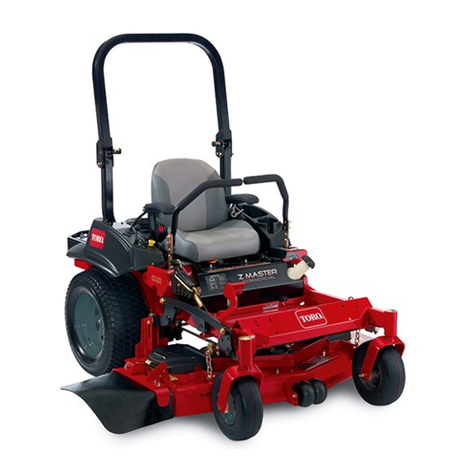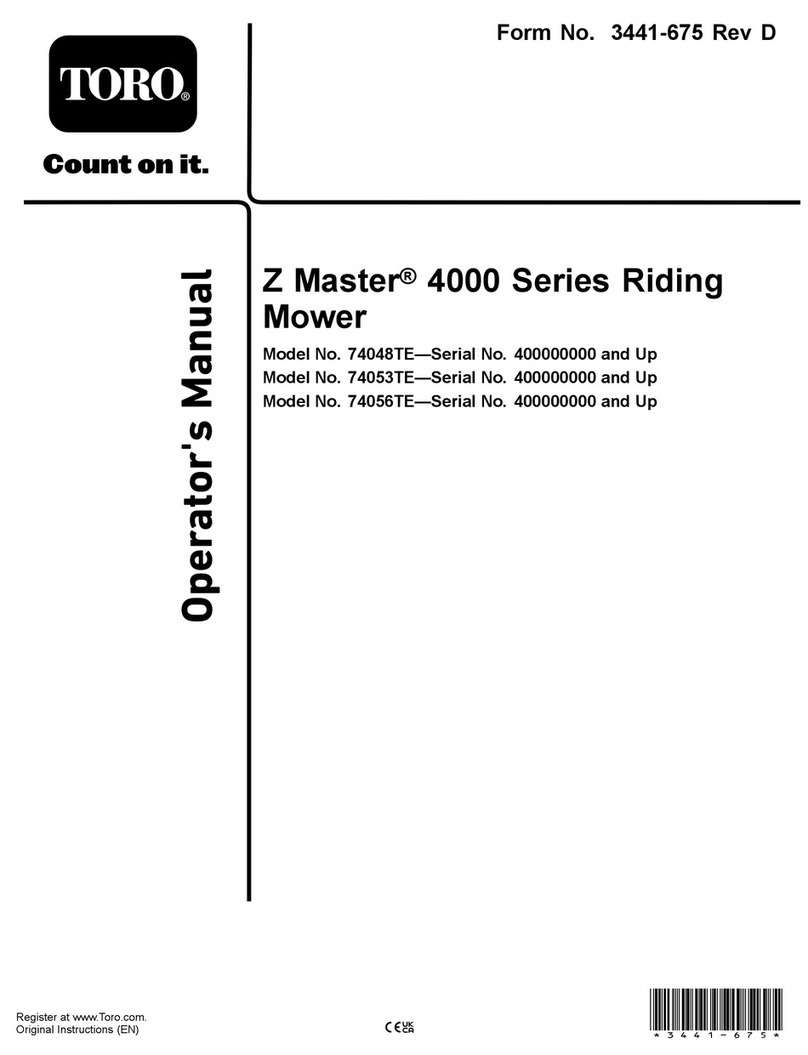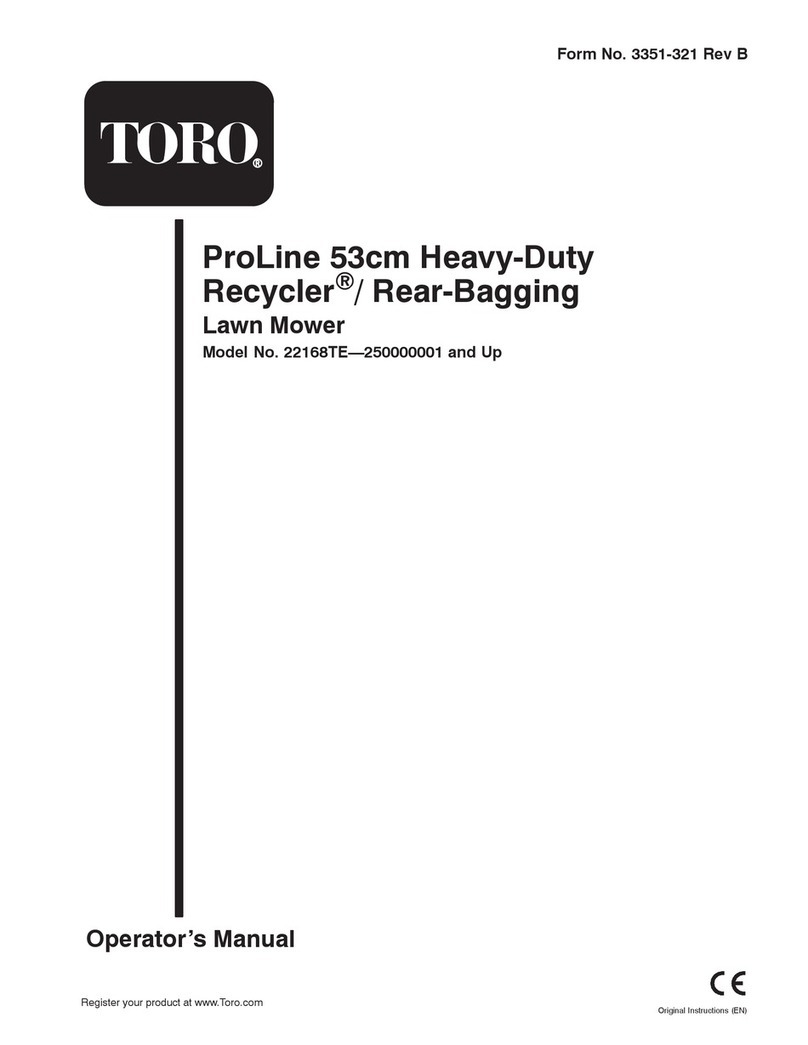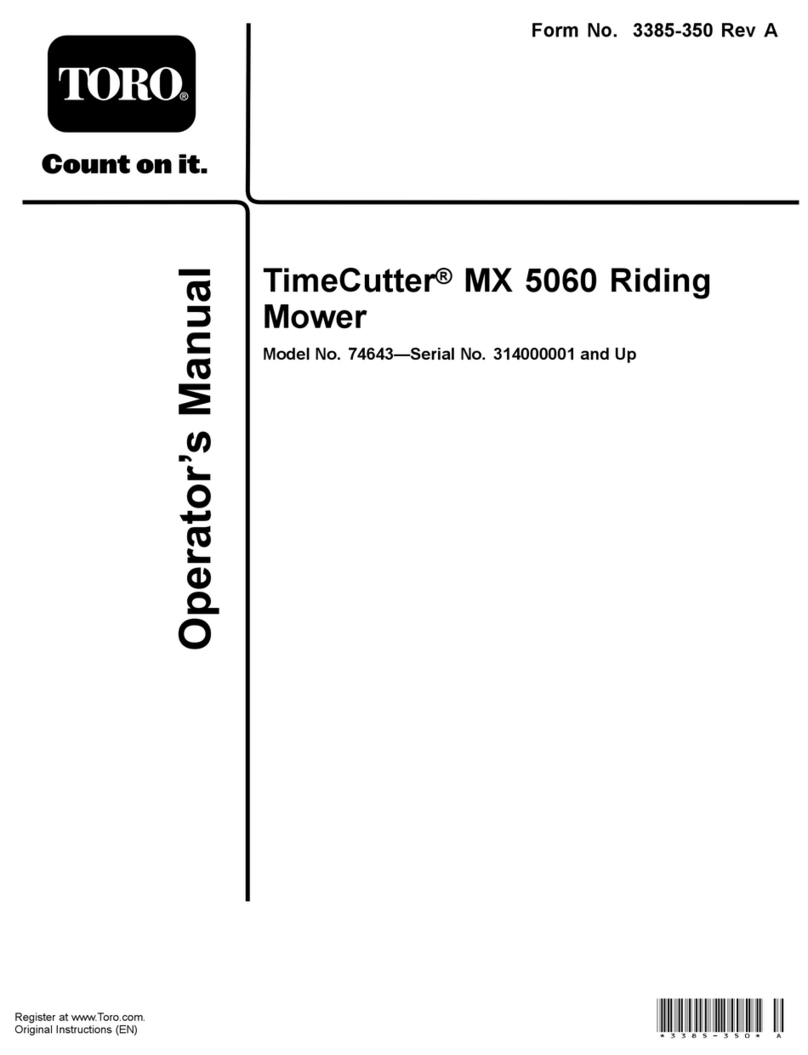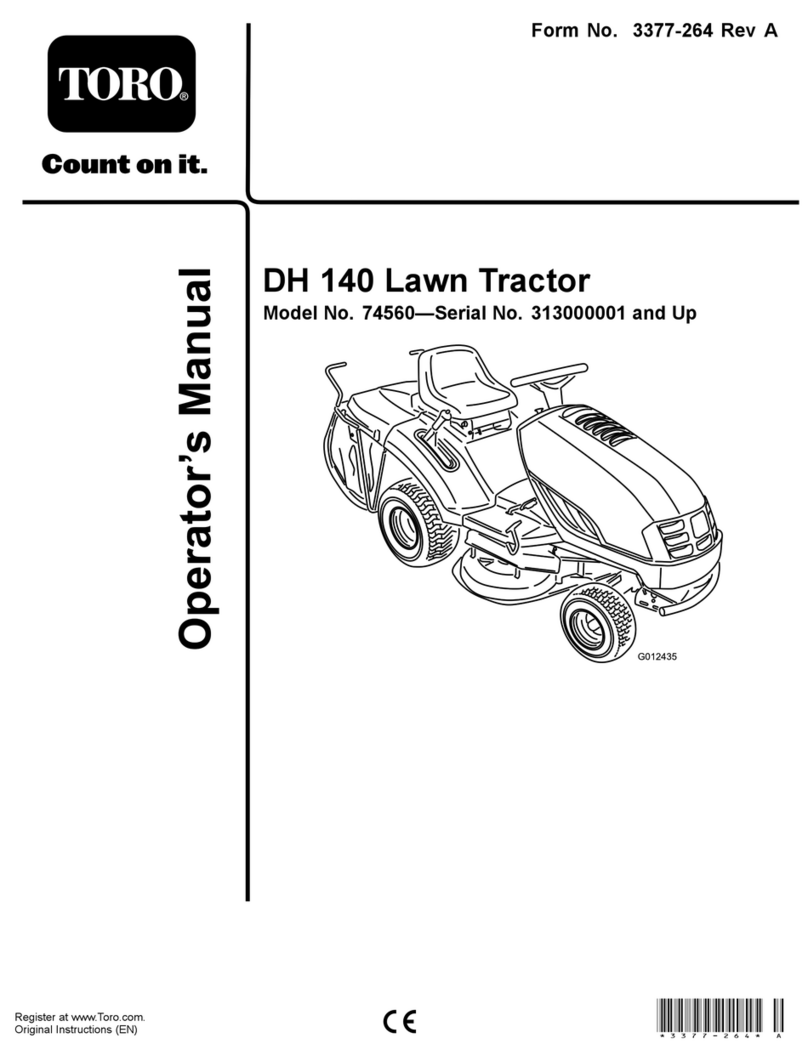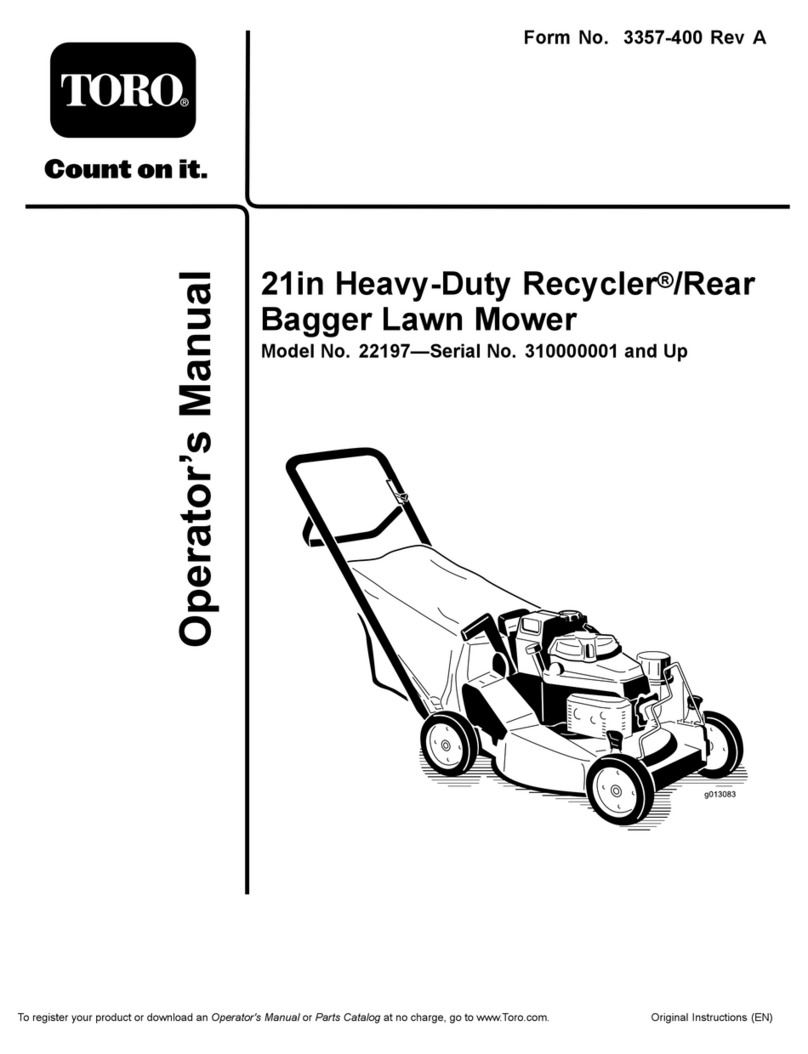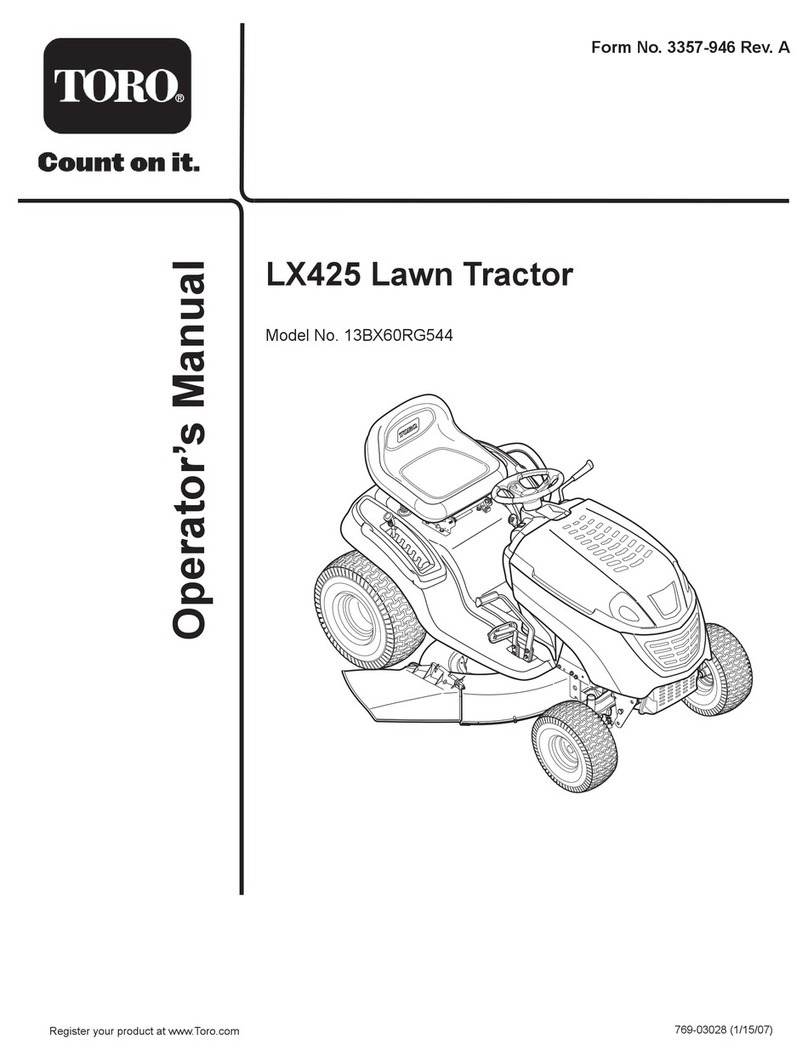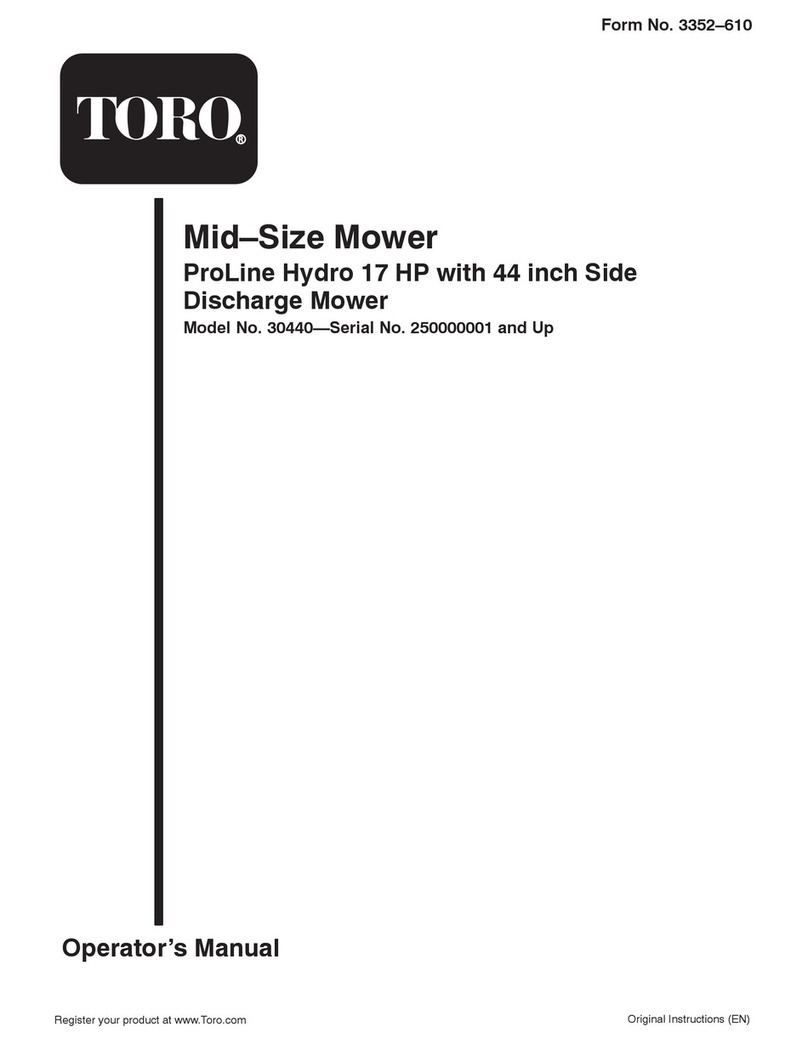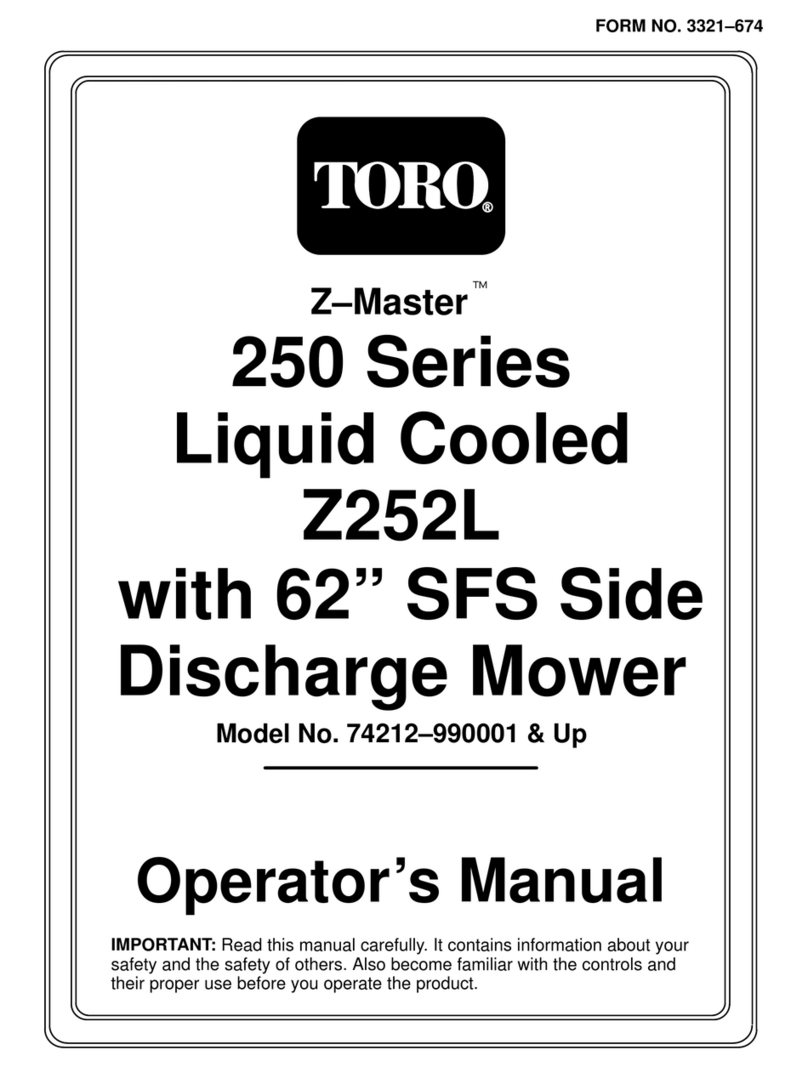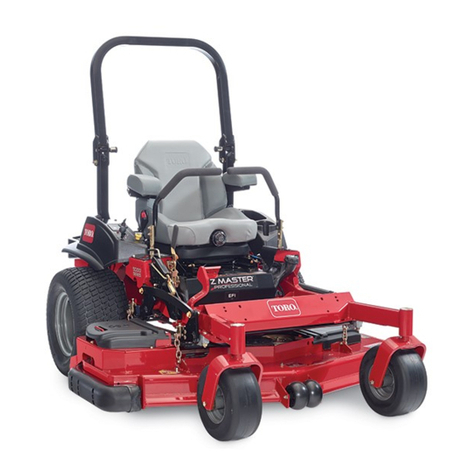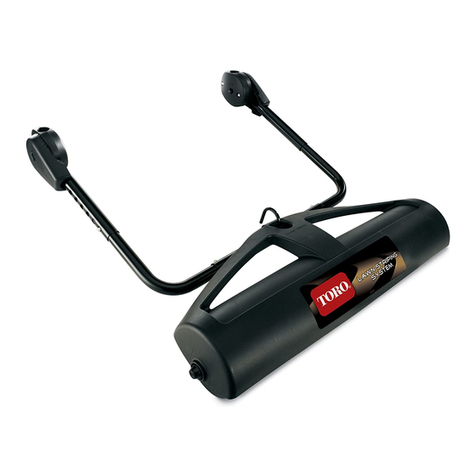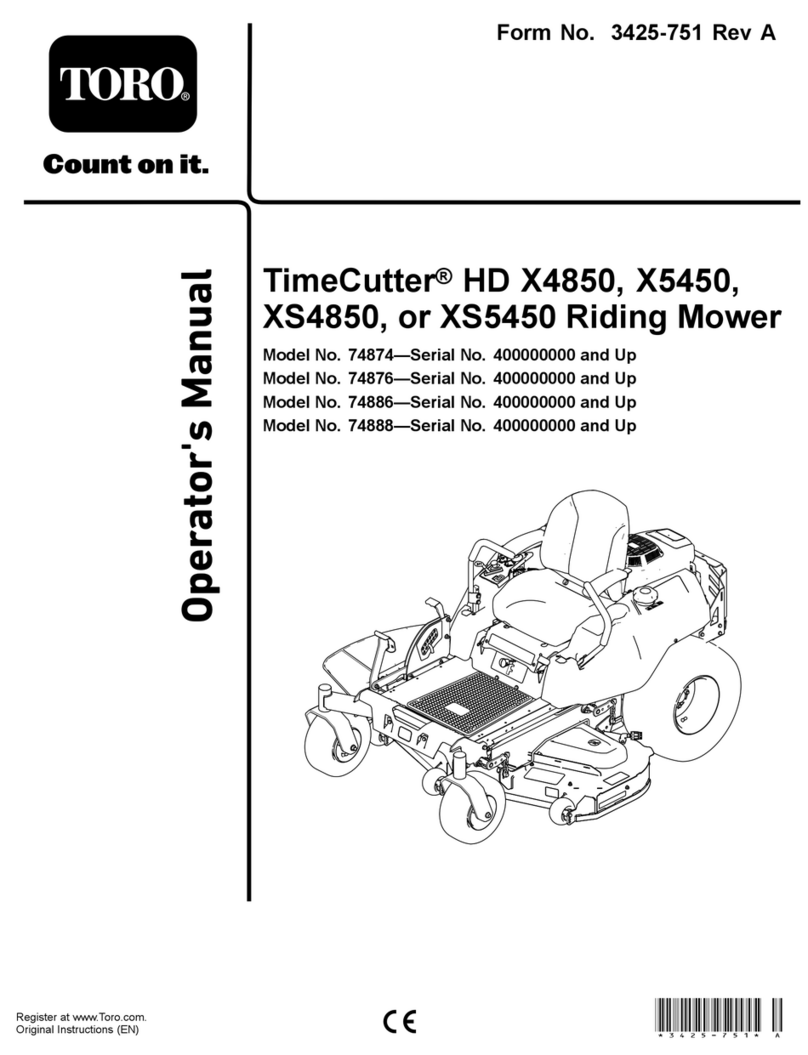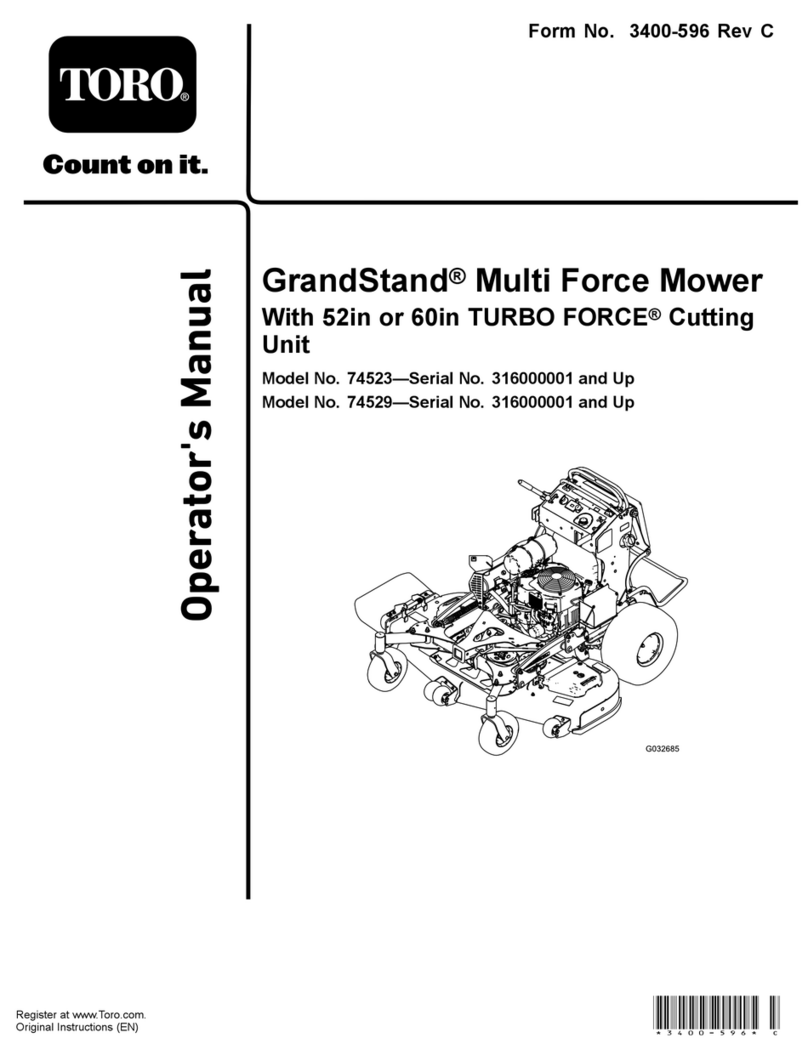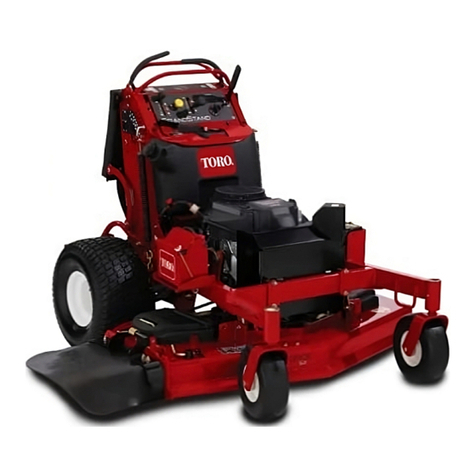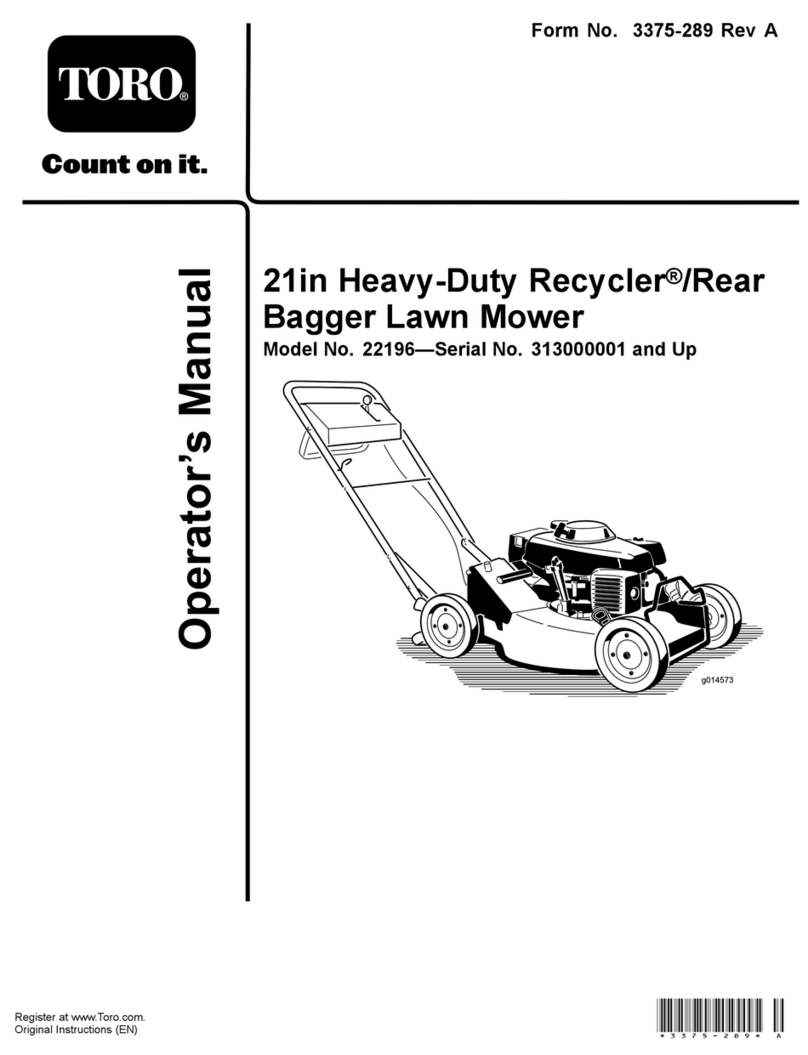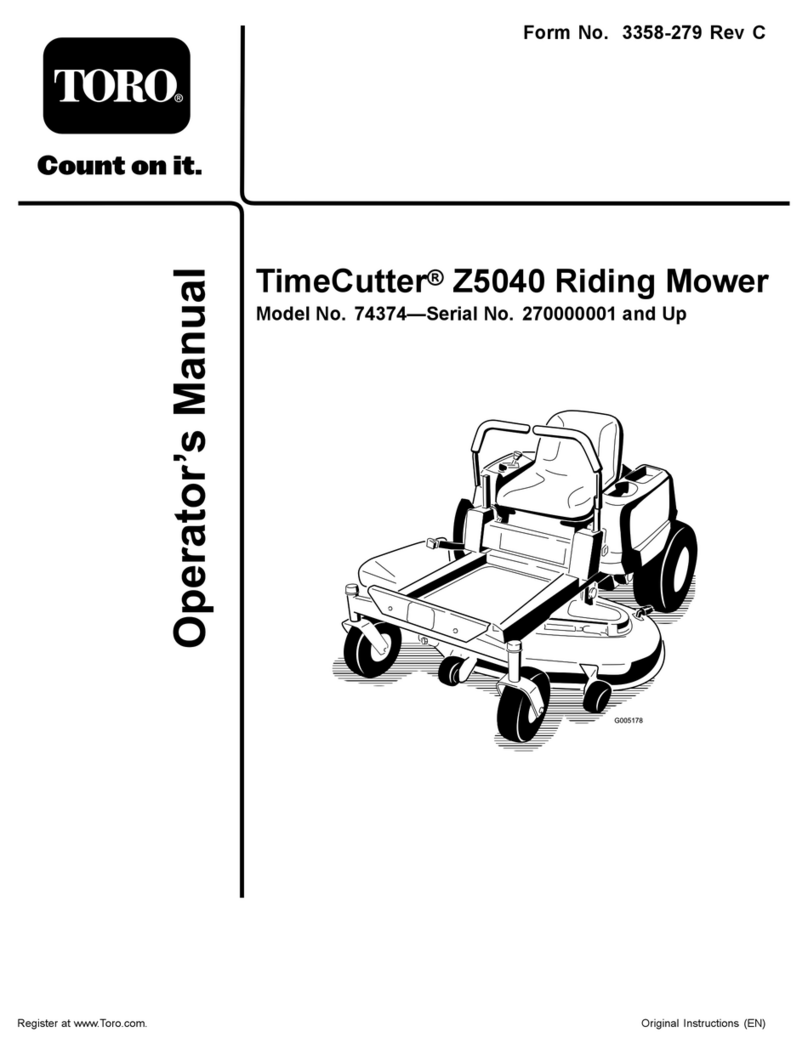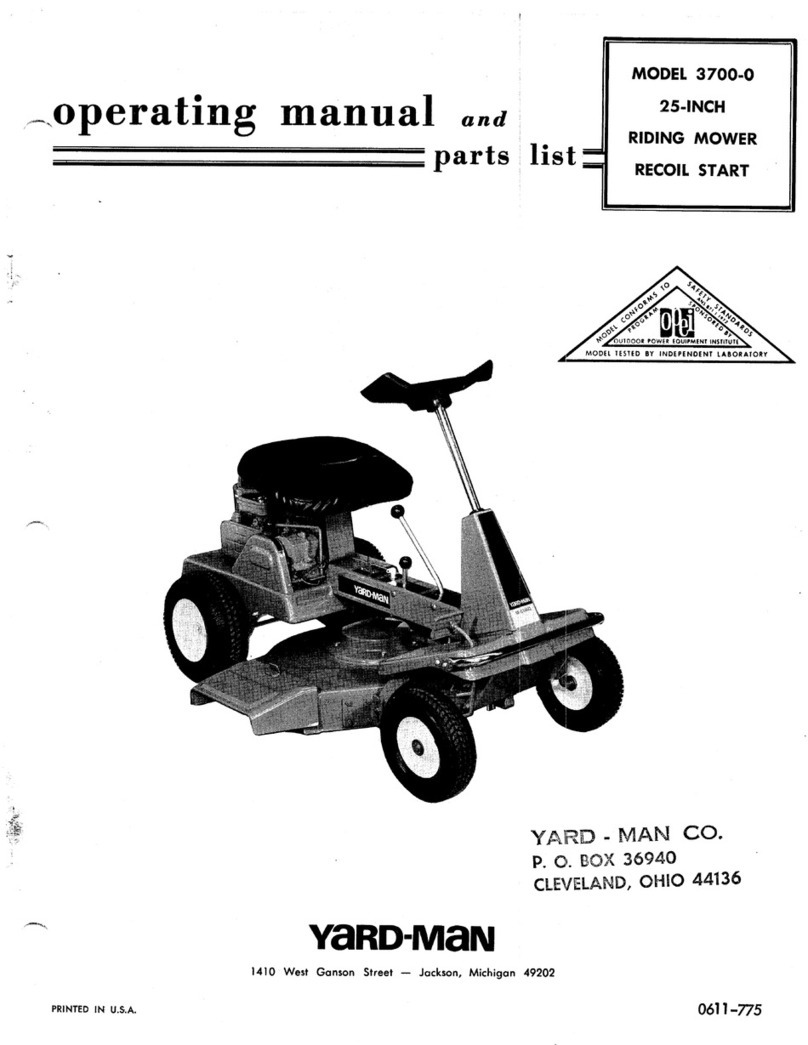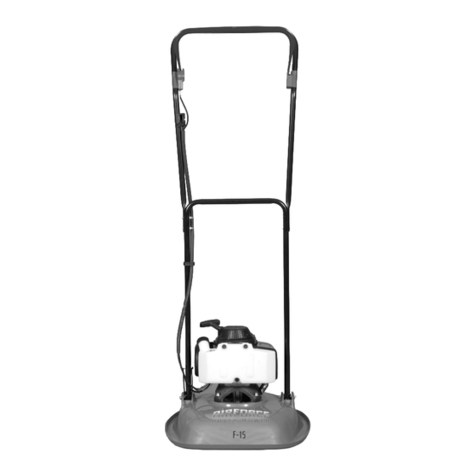
3
SAFETY INSTRUCTIONS
7. Do not operate machine while wearing sandals,
tennis shoes, sneakers or shorts. Also, do not wear
loose fitting clothing which could get caught in moving
parts. Always wear long pants and substantial shoes.
Wearing safety glasses, safety shoes and a helmet is
advisable and required by some local ordinances and
insurance regulations.
8. Fill fuel tank with gasoline before starting the en
gine. Avoid spilling gasoline. Since gasoline is flam
mable, handle it carefully.
A. Use an approved gasoline container.
B. Do not fill tank while engine is hot or running.
C. Do not smoke while handling gasoline.
D. Fill fuel tank outdoors and up to about one inch
(25 mm) from top of the tank, not the filler neck.
E. Wipe up any spilled gasoline.
WHILE OPERATING
9. Start engine when parking brake is set, blade is
disengaged, and transmission is in neutral.
10. Do not run the engine in a confined area without
adequate ventilation. Exhaust fumes are hazardous
and could possibly be deadly.
11. Using the machine demands attention, and to pre
vent loss of control:
A. Mow only in daylight or when there is good artifi
cial light.
B. Watch for holes or other hidden hazards.
C. Do not drive close to a sand trap, ditch, creek or
other hazard.
D. Reduce speed when making sharp turns and
when turning on hillsides.
12. Do not operate unless grass deflector, Recycler
cover or entire grass collector is installed. The grass
deflector must always be installed and in lowest posi
tion on the side discharge cutting unit. This product is
designed to drive objects into the ground where they
lose energy quickly in grassy areas. However, don't
take an injury risk!! When a person or pet appears un
expectedly in or near the mowing area, STOP MOW
ING. Careless operation, combined with terrain
angles, ricochets, or improperly positioned guards,
can lead to thrown object injuries. Do not resume mow
ing until area is cleared.
13. Never raise the cutting unit while the blades are ro
tating.
14. If the cutting blades strike a solid object or the ma
chine vibrates abnormally, shut the engine off. Remove
spark plug wire from spark plug to prevent possibility of
accidental starting. Check cutting unit and traction unit
for damage and malfunctioning parts. Repair any dam
age before restarting the engine and operating the cut
ting unit. Be sure blades are in good condition and
blade bolts are tight.
15. Cut grass slopes carefully. Do not start, stop, or
turn suddenly.
16. Do not touch engine or muffler while engine is run
ning or soon after it is stopped. These areas couId be
hot enough to cause a burn.
17. Before leaving the operator's position behind
handle or leaving mower unattended, shift transmis
sion into NEUTRAL, apply parking brake, release con
trol bail and shut OFF engine.
MAINTENANCE
18. Remove key from switch and disconnect spark
plug wire from spark plug to prevent accidental starting
of the engine when servicing, adjusting or storing the
machine.
19. If traction unit and mower must be tipped to per
form maintenance or an adjustment, drain gasoline
from fuel tank and oil from crankcase.
20. When driving unit forward, always use upper For
ward" traction drive handle. When backing up, always
use lower Reverse" traction drive handle.
21. To reduce potential fire hazard, keep the engine
free of excessive grease, grass, leaves and accumula
tions of dirt.
22. Be sure machine is in safe operating condition by
keeping nuts, bolts and screws tight. Check the blade
mounting bolts and nuts frequently to be sure they are
tightened to specification.
23. If the engine must be running to perform a mainte
nance adjustment, keep hands, feet, clothing and oth
er parts of the body away from the cutting unit blades
and other moving parts.
24. Do not overspeed the engine by changing gover
nor settings. To be sure of safety and accuracy, have an
Authorized TORO Proline Service Dealer check maxi
mum engine speed with a tachometer.
25. Engine must be shut off before checking oil or add
ing oil to the crankcase.
26. Allow engine to cool before storing mower in any
enclosure such as a garage or storage shed. Make
sure the mower fuel tank is empty if machine is to be
stored in excess of 30 days. Do not store mower near
any open flame or where gasoline fumes may be ig
nited by a spark. Always store gasoline in a safety-ap
proved, red metal container.
27. Perform only those maintenance instructions de
scribed in this manual. If major repairs are ever needed
or assistance is desired, contact an Authorized Toro
Proline Service Dealer. To ensure optimum perfor
mance and continued safety conformance of the ma
chine, use genuine TORO replacement parts and ac
cessories. Replacement parts and accessories made
by other manufacturers may result in nonconfor
mance with safety standards and could void the war
ranty.
